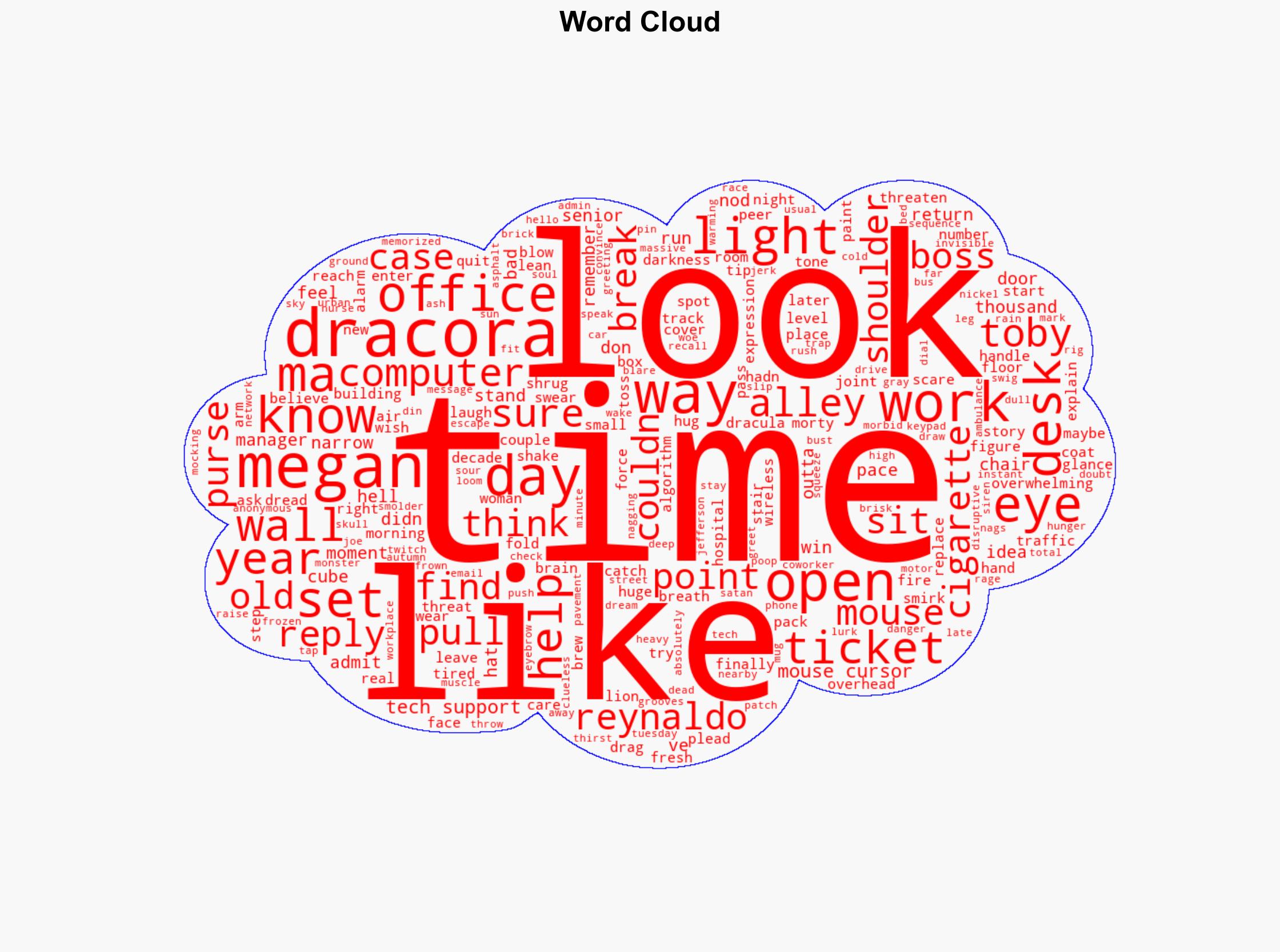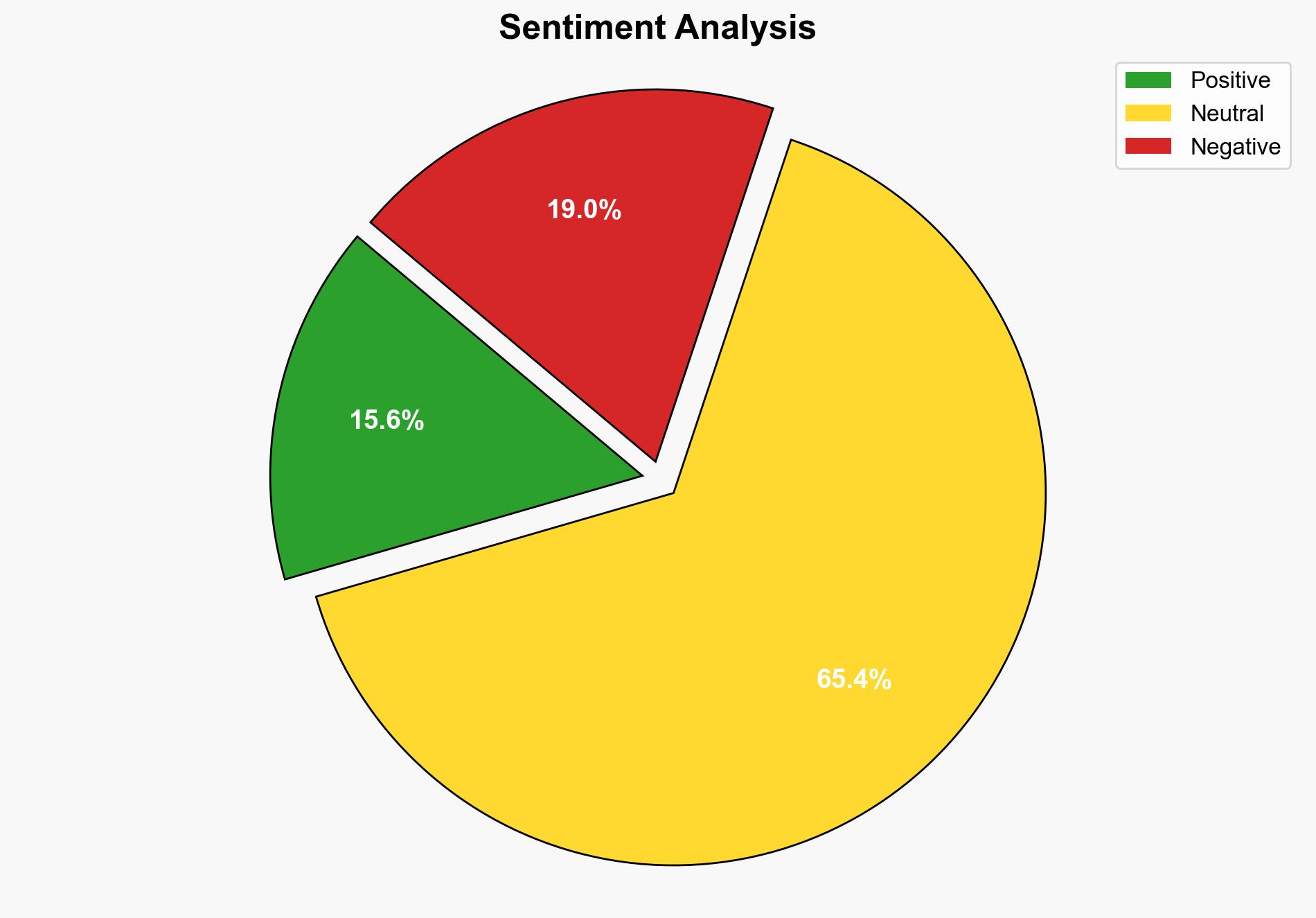The Ghost Cursor – Thedailywtf.com
Published on: 2025-10-30
Intelligence Report: The Ghost Cursor – Thedailywtf.com
1. BLUF (Bottom Line Up Front)
The most supported hypothesis is that the reported “ghost cursor” incident is a manifestation of internal workplace stress and dysfunction rather than a genuine cybersecurity threat. Confidence level: Moderate. Recommended action: Conduct a thorough internal review of workplace dynamics and stressors, alongside a basic cybersecurity audit to rule out any actual threats.
2. Competing Hypotheses
1. **Hypothesis A**: The “ghost cursor” incident is a result of internal workplace stress and dysfunction, leading to perceived anomalies.
– **Supporting Evidence**: The narrative describes a high-stress environment with overworked employees, unclear management, and a general sense of dread and dissatisfaction. This could lead to heightened sensitivity to minor technical glitches, perceived as more significant than they are.
2. **Hypothesis B**: The “ghost cursor” incident is an actual cybersecurity threat, possibly indicating a breach or malware presence.
– **Supporting Evidence**: The specific mention of a “hacked” computer and the cursor moving on its own could indicate unauthorized access or malware activity.
Using ACH 2.0, Hypothesis A is better supported due to the contextual emphasis on workplace stress and lack of concrete technical evidence pointing to a cybersecurity breach.
3. Key Assumptions and Red Flags
– **Assumptions**: Hypothesis A assumes that workplace stress can lead to misinterpretation of technical issues. Hypothesis B assumes the presence of a cybersecurity threat without direct evidence.
– **Red Flags**: Lack of technical details or evidence supporting a cybersecurity breach. The narrative’s focus on personal and workplace issues may overshadow potential technical problems.
– **Blind Spots**: The absence of a detailed technical investigation or cybersecurity audit leaves room for potential oversight of genuine threats.
4. Implications and Strategic Risks
– **Workplace Dynamics**: Persistent stress and dysfunction could lead to decreased productivity and increased turnover, impacting organizational performance.
– **Cybersecurity**: If a threat is present and unaddressed, it could lead to data breaches or system compromises, with potential economic and reputational damage.
– **Psychological Impact**: Continued stress may exacerbate mental health issues among employees, leading to long-term organizational challenges.
5. Recommendations and Outlook
- Conduct an internal review to address workplace stressors and improve management practices.
- Perform a basic cybersecurity audit to rule out any actual threats.
- Scenario Projections:
- **Best Case**: Improved workplace environment and no cybersecurity threats found.
- **Worst Case**: Unaddressed stress leads to high turnover, and a hidden cybersecurity threat causes a data breach.
- **Most Likely**: Workplace improvements reduce stress perceptions, and no significant cybersecurity threats are identified.
6. Key Individuals and Entities
– Megan: Junior developer expressing concern over workplace conditions.
– Toby and Reynaldo: Network administrators involved in the narrative.
– Patricia Dracora: Senior project manager reporting the “ghost cursor” incident.
7. Thematic Tags
national security threats, cybersecurity, workplace dynamics, psychological stress




